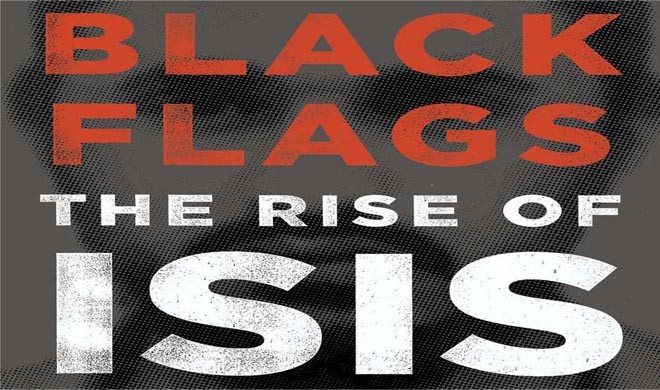
The story behind the rise of the militant organisation may be familiar but it has never been told this well before

"Hillary Clinton created ISIS!"
How many times were these words repeated by the now President elect Donald Trump during the corrosive election campaign for the 2016 US election? But discerning observers of world events know that there is more to the creation of ISIS than one politician. It is nonetheless a complicated and tragic story, one that Joby Warrick aims to explain in Black Flags: The Rise of ISIS.
The story of the creation of ISIS as told by Warrick, begins not in Iraq but in an isolated fortress prison in Jordan. Housed within the deep confines of this prison is one Ahmed Fazil al-Khalayleh, who will come to be known to the world as Abu Musab al-Zarqawi.
Warrick’s book about the emergence of ISIS tells us the story of al-Zarqawi, from his days as a hoodlum on the wrong side of the tracks in Zarqa, Jordan, to his demise in a remote town in Iraq. Readers who pick up this book intrigued by its title would expect the book to trace the life of Abu Bakr al-Baghdadi, the self-proclaimed caliph of the so-called Islamic State. Instead they will find an in-depth and fascinating narrative about al-Zarqawi, the leader of al-Qaeda in Iraq who had desired to create an organisation like ISIS, but was unable to see it through till the end in his own lifetime.
Al-Zarqawi’s life story as told by Warrick offers compelling insight into the life of a disenfranchised Muslim youth who turns to Islamic radicalism after a life of crime and debauchery in Jordan. Warrick recounts Zarqawi’s journey from his rough neighbourhood in Zarqa, Jordan, to Afghanistan, and then back to Jordan before finally heading to Iraq in 2003 after the American invasion. An ambitious jihadi with dreams of orchestrating an apocalyptic showdown between the West and Muslims, Zarqawi’s mission is explained to the reader chronologically. Warrick skilfully explains the political disagreements that occur between al-Qaeda led by Osama bin Laden, and al-Qaeda in Iraq, led by al-Zarqawi. The reader is led through the political and tactical differences between the two extremist groups as they clash in attempting to reconcile their differing approaches to global jihad.
Furthermore, the book examines the security establishment of Jordan, a country that has been on the frontline of the wars in Iraq and Syria but has received little attention. Warrick traces the history of the Jordanian monarchy and the problems faced by the security apparatus in Jordan in their attempts to ward off the extremist violence engulfing its neighbourhood. He achieves this through extensive research and interviews with members of the Mukhabarat, Jordan’s General Intelligence Directorate, who had been following Zarqawi since his early days as a small time radical in Jordan.
The narrative also explains to the reader how Jordan came to be caught up in the storm that erupted in the Middle East after 2003, and how Zarqawi planned vengeance on his home country.
Warrick additionally delves into the experience of the US intelligence services as they grapple with the unravelling of Iraq. Warrick meticulously outlines the many mistakes made by the US forces in Iraq after the toppling of Saddam Hussein’s regime. Through many stories recounted by officers and operatives, the reader learns about the innumerable missteps and errors that led to the collapse of Iraq and the sectarian war orchestrated by al-Zarqawi to drag American forces in a quagmire of bloodshed.
The book is divided in three sections, each covering a different time period. The first two sections methodically dissect Zarqawi’s life and the chaos that he created in Iraq, ending with his death. The third section explains the story of ISIS, the rise of Abu Bakr al-Baghdadi and the declaration of the Islamic State of Iraq and the Levant.
Continuing from section two to three, the reader may feel a disconnect, as if the narrative’s smoothness has suddenly been lost. This is because the book was originally intended as a biography of al-Zarqawi, ending with his death. However, as Warrick was completing his work, ISIS took the world by storm, and compelled by current events, Warrick decided to extend the scope of his book and continue the narrative of al-Zarqawi’s life to the posthumous achievement of his ambitions by al-Baghdadi.
Despite the thoroughly researched narrative of the third section, it leaves the reader feeling slightly less enthralled than the first two parts. Nonetheless, Warrick weaves a compelling and well-written narrative till the end, peppered throughout with incisive analysis by individuals on the frontlines of wars in the Middle East.
"The combination of American jets and Arab jails were the critical fulcrum around which al-Qaeda and ISIS could germinate," explains Lebanese journalist Rami Khouri in the book.
Warrick weaves the complex human and political story behind this insight as an easy and engaging narrative that draws in the reader and leaves him turning page after page in anticipation to find out more about a story that is familiar, but has never been told this well before.